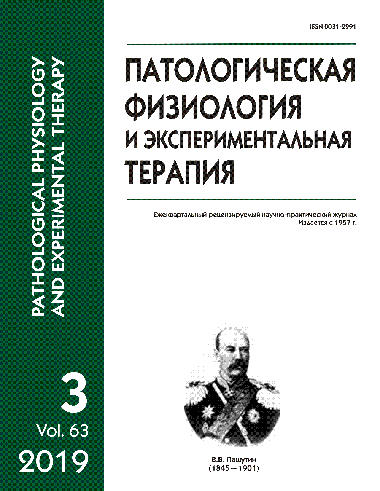Effect of a NOS inhibitor, T1023, in combination with γ-irradiation and cyclophosphamide on growth and metastasis of Lewis lung carcinoma
Abstract
The aim was to study antineoplastic effects of a NOS inhibitor, T1023, in combination with γ-irradiation and cyclophosphamide. Methods. Epidermoid Lewis lung carcinoma (LLC) was used as a tumor model. Two independent experiments were performed. In the first experiment, antitumor effects of T1023 and γ-irradiation were studied individually and combined. In the second experiment, antitumor effects of T1023 and cyclophosphamide were studied individually and combined. In both experiments, mice from the first experimental group were daily injected with T1023 60 mg/kg from day 7 to 20. In the first experiment, animals of the second group were treated with γ-irradiation at 5 Gy on day 7 of tumor growth. In the second experiment, mice of the second group were injected with cyclophosphamide 100 mg/kg on day 7 of tumor growth. In both experiments, mice of the third group received a respective combined treatment according to the protocols described above. The first injection of T1023 was performed on day 7 after tumor transplantation at 4 hours after the irradiation or cyclophosphamide treatment. Antitumor effects were assessed by comparing the tumor size, duration of tumor growth delay, and the index of tumor growth inhibition in control and experimental groups. The effect of treatments on metastatic activity of carcinoma was evaluated by the intergroup difference in number of pulmonary metastases inhibition index on day 21 of tumor growth. Statistical significance was determined using the Kruskal-Wallis dispersion analysis with the Dunn Q-test. Results of the study showed that the T1023 treatment both in combination with γ-irradiation and with cyclophosphamide was associated with a significantly greater inhibition of tumor growth and metastasis. The antineoplastic effect of both combinations was consistent with the additive antitumor and antimetastatic effect of the NOS inhibitor, γ-radiation, and cyclophosphamide. Conclusion. The study showed the ability of NOS inhibitors to enhance the effectiveness of radio- and chemotherapy for malignant tumors and suggested a promising outlook for further development of T1023.






